Geschichtsblätter: 1576, Battle at Vissenaken
by
Frans Hogenberg
Detail
Date: 25 October 1576
Dimensions (not including margins): 21,2 x 28 cm
Condition: Good. Strong paper and wide margins. Centre fold as published. Slight natural age-toning.
Condition rating: A
Verso: blank
Text at bottom: in German
Unless otherwise specifically stated on this map page, we charge the following expedition costs in euro (unfortunatelly, gone up with Covid, but still too low in reality!):
– Benelux: 40 euro
– Rest of Europe: 60 euro
– Rest of the World: 100 euro
This item is sold
Hogenberg shows the battle at Vissenaken (Tienen) of 25 September 1576
Due to rumors of an attack by the revolutionaries on Spanish troops in Leuven, a Spanish equestrian army advanced to Leuven. On the way, at Vissaken (near Tienen), the groups clashed. Unarmed Leuven citizens and students came out of curiosity to have a look. Some of them died. Notice bottom left students who are shot from a tree by Spanish musketeers: “Studenten und Burger von Louen”. Bottom right: “400 Spanisgsche Reuter zu Feuss”. Top right: the city of Tienen.

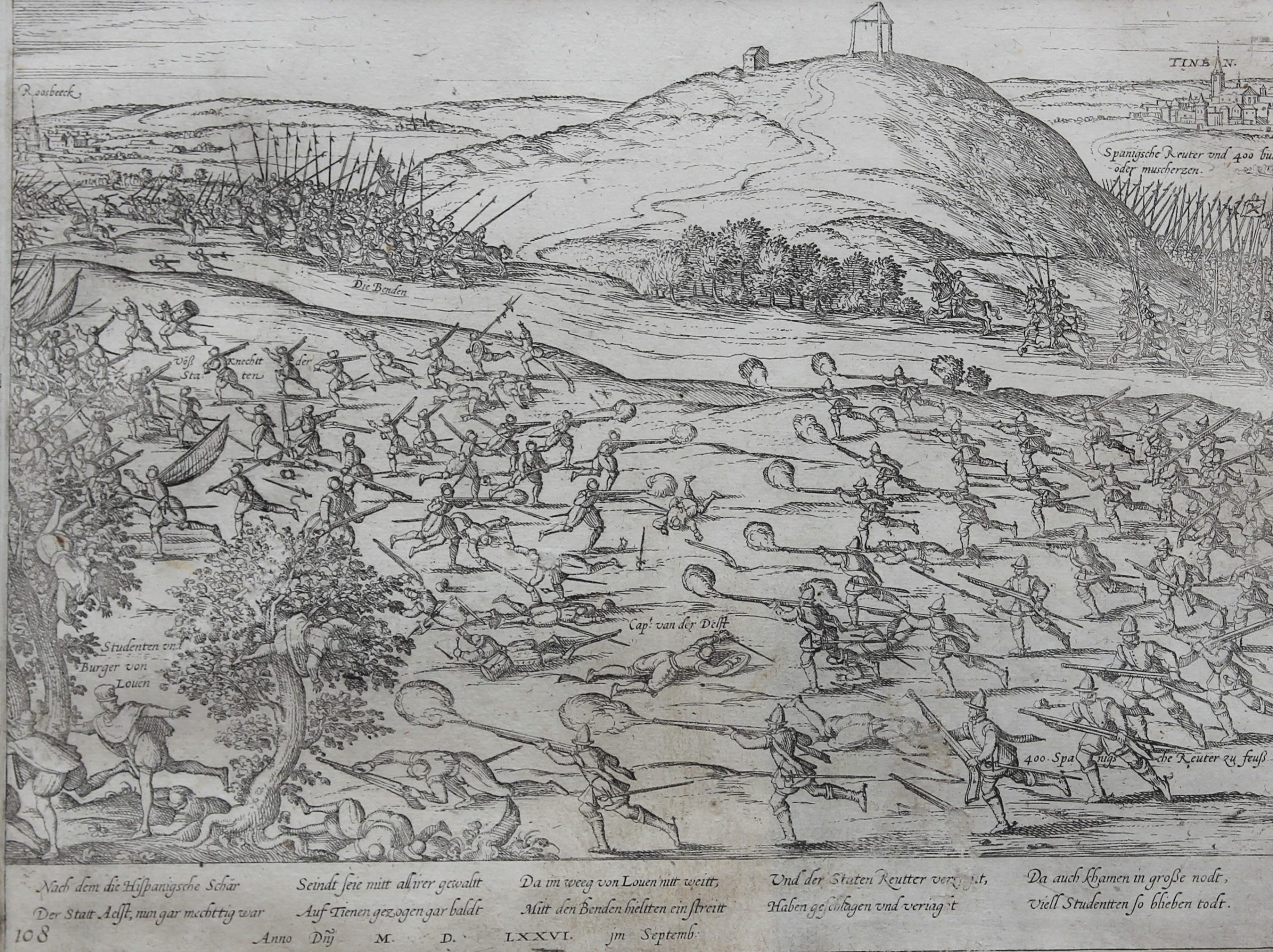
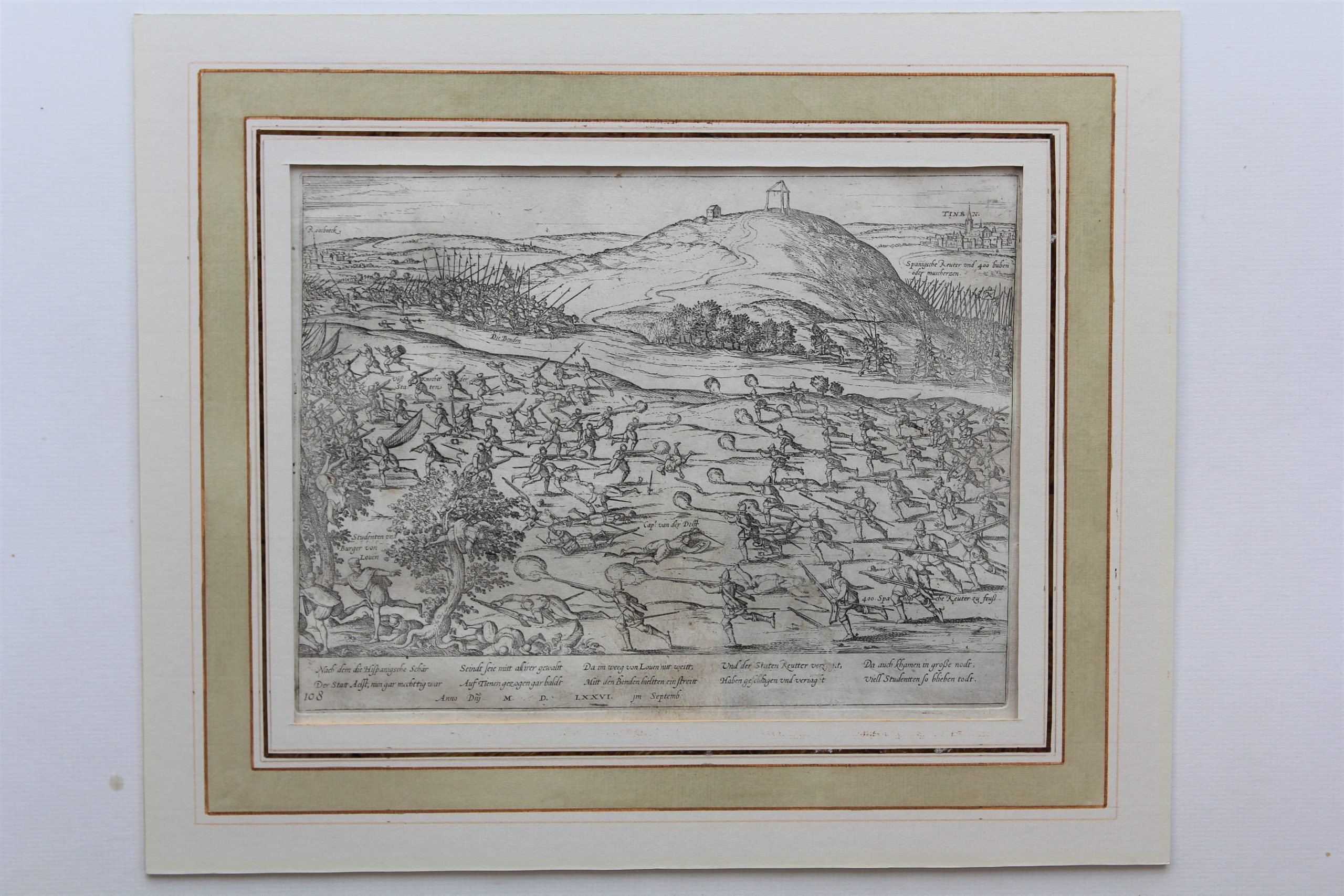
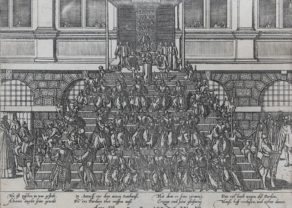
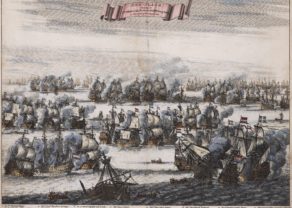
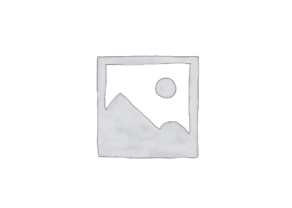
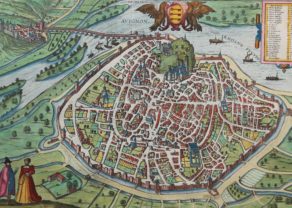
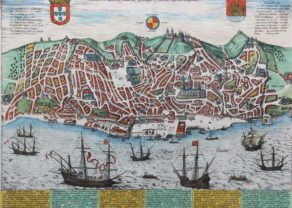
Hogenberg and his Geschichtsblätter (news prints)
The publication of news prints was already in vogue in the 16th century before Hogenberg published his well-known Geschichtsblätter. In printing houses in Rome (Lafreri) and Venice (Gastaldi), the cartographers also published these such news prints. The preferred topics were then-current political or military images. Publishing news prints actually went hand in hand with the publication of maps.
Hogenbergs Geschichtsblätter are a collection of several hundred history papers that Frans Hogenberg and his son Abraham published between 1569 and 1637. The central theme is the Eighty Years’ War (1568 – 1648), but some views also show the French Religious Wars (1559 – 1573) and the English dynastic disputes. The Geschichtsblätter illustrate in an almost photographic way an act of war with a German caption at the bottom, sometimes in verse form, dating the fact. They provide both a visual and a narrative picture of the evolution of the war. The different engraving styles show that several engravers contributed to this work in the studio of the Hogenberg family. The Geschichtsblätter were sold loose-leaf and were popular.
Several editions of the Geschichtsblätter are known with varying numbers of pages and varying comments.